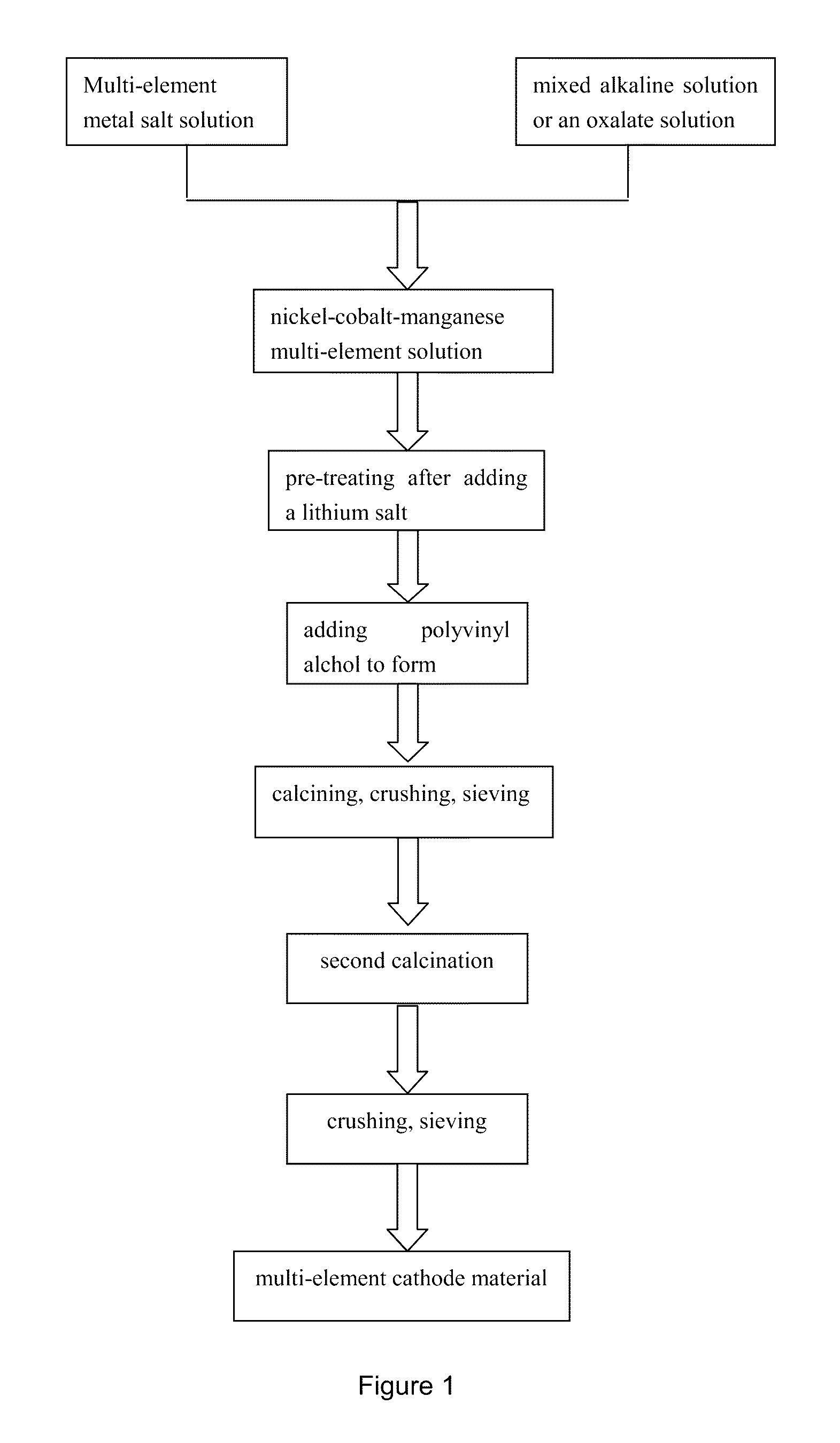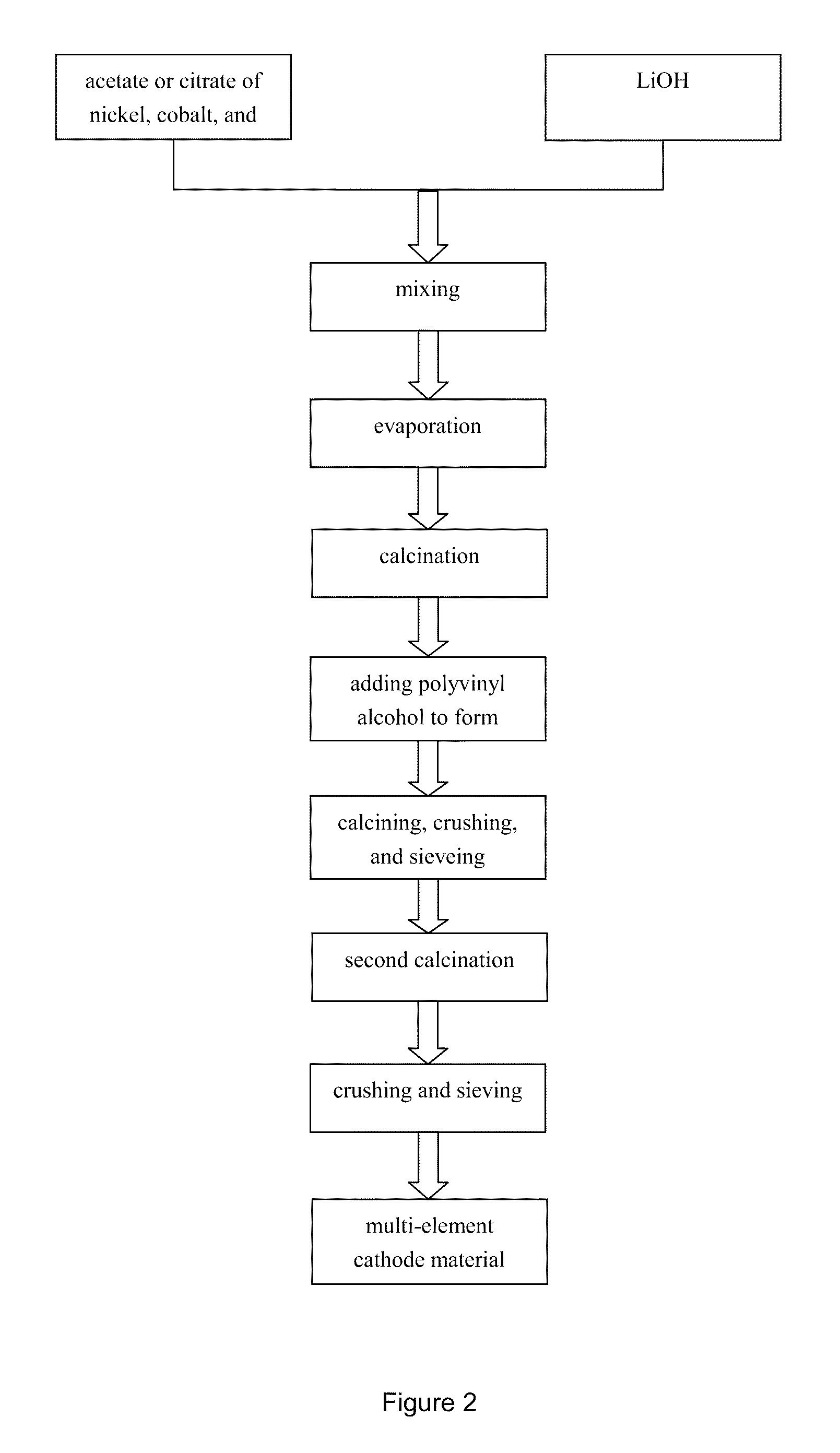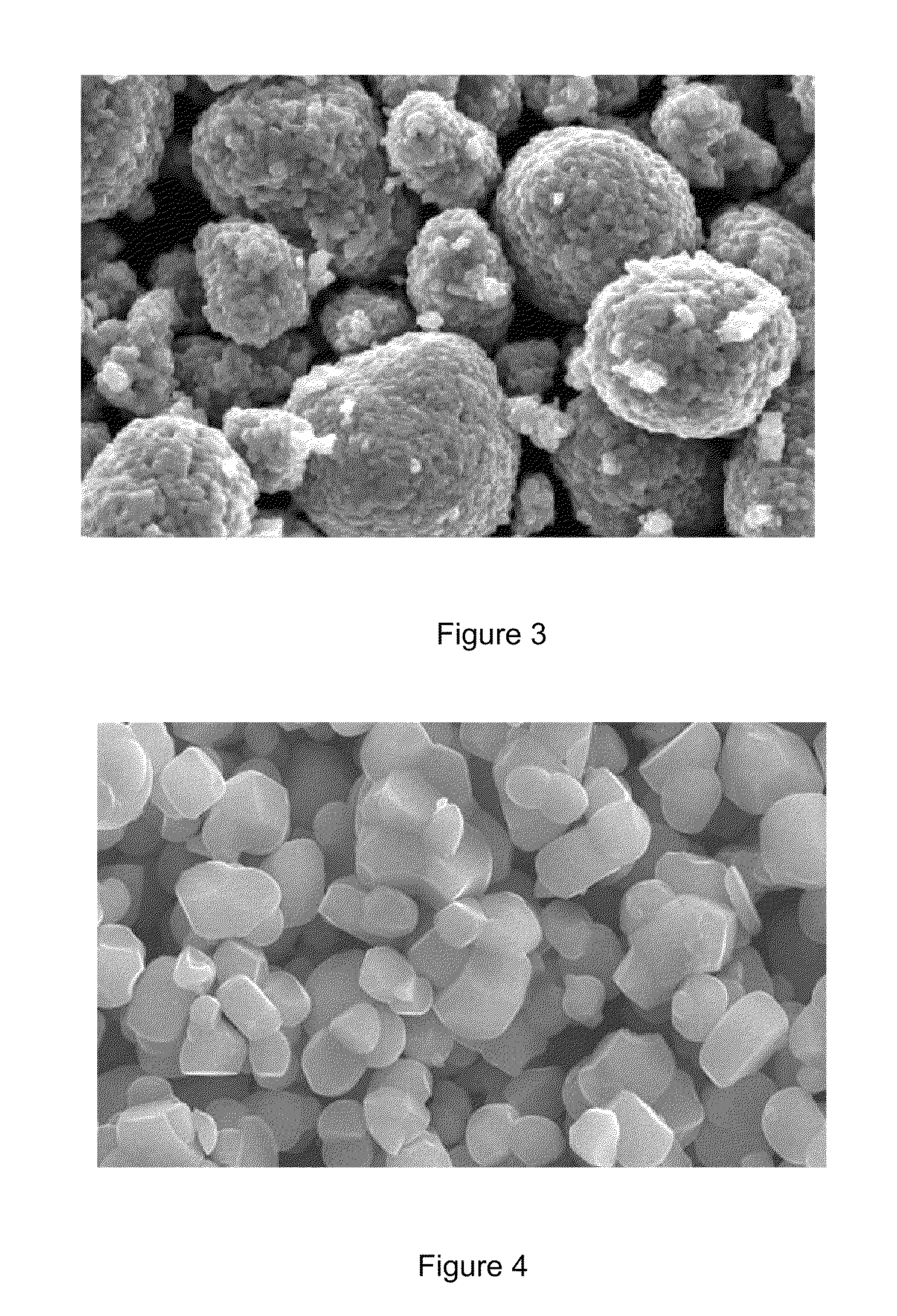Nickel-cobalt-manganese multi-element lithium ion battery cathode material with dopants and its methods of preparation
a lithium ion battery and lithium ion battery technology, applied in the direction ofnickel compounds, cell components, conductors, etc., can solve the problems of poor safety performance, difficulty in further improving capacity, high cost of lithium cobalt oxide materials, etc., and achieve low moisture absorption, good thermal stability, and compact density high
- Summary
- Abstract
- Description
- Claims
- Application Information
AI Technical Summary
Benefits of technology
Problems solved by technology
Method used
Image
Examples
example 1
[0027]311 g of nickel sulfate (Ni element weight percentage 21.2%), 158 g cobalt sulfate (Co element weight percentage 20.56%), 62.7 g of manganese sulfate (Mn element weight percentage 32.2%) were added in 2.2 L water. The solution was stirred, filtered, and then added to the filtrate europium nitrate (Eu element 0.03 g), dysprosium nitrate (Dy element 0.07 g), potassium tantalum (Ta elements 0.07 g), and ammonium molybdate (including Mo element 0.05 g). Stirring the solution to obtain a multi-metal salt solution (2.5 L) having a total metal molar concentration of 0.82 mol / L. The molar ratio of Ni:Co:Mn=3.06:1.50:1. The amount of dysprosium, europium, tantalum, molybdenum was 0.185% of the total mass of nickel, cobalt, and manganese.
[0028]The temperature of the above-described multi-metal salt solution was raised to about 70° C., then added 1.2 L of the multi-metal salt solution at the rate of 5˜10 mL / min into 2 liters alkaline solution at about 45° C. The alkaline solution contain...
example 2
[0032]Nickel nitrate containing 52.2 g Ni, cobalt nitrate containing 42.9 g Co, and manganese nitrate containing 25 g Mn were dissolved in 1.7 L of pure water to obtain a solution 2.1 L in volume. Then added to the solution lanthanum nitrate containing 0.04 g lanthanum, europium nitrate containing 0.06 g of europium, dysprosium nitrate containing 0.10 g dysprosium, potassium tantalum containing 0.08 g tantalum. The solution was stirred to obtain a multi-metal salt solution having a total metal molar concentration of 0.99 mol / L (2.1 L). The molar ratio Ni:Co:Mn=1.95:1.59:1. The total amount of lanthanum, dysprosium, tantalum, europium was 0.23% of the total mass of nickel, cobalt and manganese content.
[0033]The solution described above was heated to about 60° C. One liter of the multi-element metal salt solution was added to 1.64 liter of alkaline solution that contained 1.1 g polyethylene glycol 6000 (the amount of polyethylene glycol was 0.92% of the total mass of nickel, cobalt, a...
example 3
[0036]219.3 g nickel sulphate (Ni weight percentage 21.2%), 250.6 g of cobalt sulfate (Co weight percentage 20.56%), 71.2 g of manganese sulfate (Mn weight percentage 32.2%) was dissolved in 1.3 liters of pure water. The solution was stirred to dissolve the salts, filtered, and then into the filtrate added dysprosium nitrate (containing 0.1 g Dy), neodymium nitrate (containing 0.11 g Nd), sodium molybdate (containing 0.07 g Mo), potassium tantalum (containing 0.07 g Ta). The solution was stirred to dissolve the salt to obtain 1.8 L of multi-metal salt solution having a total molar concentration of metal 1.16 mol / L. The molar ratio in the solution was Ni:Co:Mn=1.9:2.1:1. The amount of dysprosium, neodymium, molybdenum, tantalum was 0.29% of the total mass of nickel, cobalt, and manganese.
[0037]The solution described above was heated to 45° C. This solution was added at the rate of about 30 mL / min to 2 liters of potassium oxalate solution. The potassium oxalate solution (temperature a...
PUM
| Property | Measurement | Unit |
|---|---|---|
| temperature | aaaaa | aaaaa |
| diameter | aaaaa | aaaaa |
| temperature | aaaaa | aaaaa |
Abstract
Description
Claims
Application Information
 Login to View More
Login to View More - R&D
- Intellectual Property
- Life Sciences
- Materials
- Tech Scout
- Unparalleled Data Quality
- Higher Quality Content
- 60% Fewer Hallucinations
Browse by: Latest US Patents, China's latest patents, Technical Efficacy Thesaurus, Application Domain, Technology Topic, Popular Technical Reports.
© 2025 PatSnap. All rights reserved.Legal|Privacy policy|Modern Slavery Act Transparency Statement|Sitemap|About US| Contact US: help@patsnap.com



